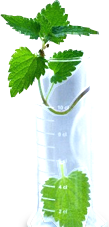



Author(s): Madhuri Sathyanarayana, S. E. Neelagund*, Kajal Rai
Citrus latifolia (C. latifolia) have obtained a significant role in traditional medicine system. The nutritive and medicinal values of citrus fruits with special reference to the fruit of the genus Aegle of the Rutaceae family, C. latifolia fruit and juice are excellent sources of health-promoting substances like vitamins, nutrients and factors of medicinal value cannot be under estimated. Because of its eminent medicinal property, the present study was conducted to investigate the antibacterial, antifungal, antioxidant and radical scavenging assays. Citrus peel extract were prepared in ethanol and methanol, which are taken for determining mentioned activities. Agar well diffusion assay was performed to determine antibacterial activity. Among bacteria, Bacillus subtilis, Staphylococcus aureus and Klebsiella pneumoniae were inhibited to high and least extent respectively. In case of antifungal activity, Poisoned food technique was performed against Aspergillus flavus. The colony diameter of test fungi was considerably lesser in plates poisoned with extracts when compared to control plates. Radical scavenging activity was determined by Hydrogen peroxide Scavenging assay. The extracts scavenged H2O2 radicals dose dependently. The scavenging effect was marked in case of ethanolic peel extract was slightly high followed by methanolic extracts. Total phenolic content of extracts was also estimated by Folin-Ciocalteu reagent (FCR) method. Where, Ethanolic extract contained high phenolic content followed by methanolic extracts. The peel of C. latifolia can be used to treat skin and other bacterial infections and also to control phytopathogenic fungi.